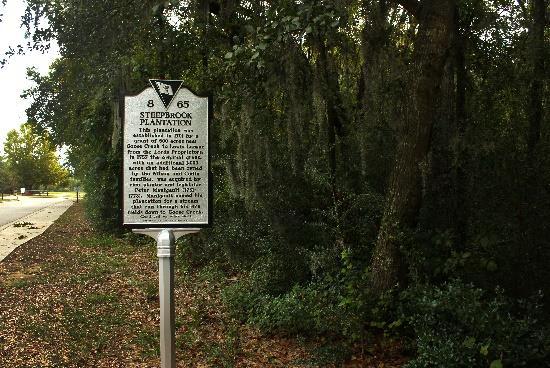
1 minute read
FinalUnformatted
Established in 1679, this land was granted to Edward and Arthur Middleton of Barbados, who had recently relocated to Carolina. Shortly after, Edward transferred his share of the 1,780-acre plantation to his brother, Arthur. Passing through several owners via inheritance and sale, and having been subdivided twice over the following two centuries, the remaining 400 acres of the plantation were sold to the Otranto Hunting Club in 1872. It was at this time that the clubhouse was constructed, which currently remains on the former plantation’s site as a single-family residence. In recent decades, a real estate developer purchased the property and renovated the plantation house, the interior of which had been gutted by a fire. This newly renovated building was to be the clubhouse for a residential community to be constructed on the 400-acre plantation. Otranto Plantation was added to the National Register in 1978, two years after the Otranto residential community voted to join the City of Hanahan for improved public services. The Otranto Plantation Indigo Vats was listed on the National Register in 1989.
Yeamans Hall Plantation
One of several ‘eligible’ or ‘potentially eligible’ sites for listing on the National Register of Historic Places is the Yeamans Hall Plantation. This land was granted to Sir John Yeamans as early as 1670. During the earthquake of 1886, the house was lost in a fire, driving the Smith family, who owned the plantation at the time, to sell the plantation in 1900. In 1915, D. W. Durant, a North Charleston developer, seeing an opportunity to reuse the land, invited the renowned landscape architect Frederick Law Olmsted, Jr., to survey the land and assess its suitability as a golf resort. With impressive reviews from Olmsted, Durant and architect James Gamble Rogers and others organized the Yeamans Hall Company and purchased the land in 1924. Olmsted’s design firm was commissioned to prepare a “general plan” for the exclusive Yeamans Hall Golf Club, and Rogers designed the clubhouse. The clubhouse opened in 1924 and still functions in its original capacity today.
Historical Markers
There are currently two historical markers located within the limits of Hanahan: Bowen’s Corner and Steepbrook Plantation.


• Bowen’s Corner is significant in the history of African American slaves and freed men after the Civil War. The marker is located at the intersection of Foster Creek Road and Tanner Ford Boulevard.
• Steepbrook Plantation was once home to a longtime member of the Commons House of Assembly and Speaker of the House (1765-1772), Peter Manigault. The two-story house was located on Mabeline Road at the Hanahan Elementary School. There are no structures or relics at either of these locations, but the historical markers serve as a reminder of the history that took place at these locations all those years ago.







